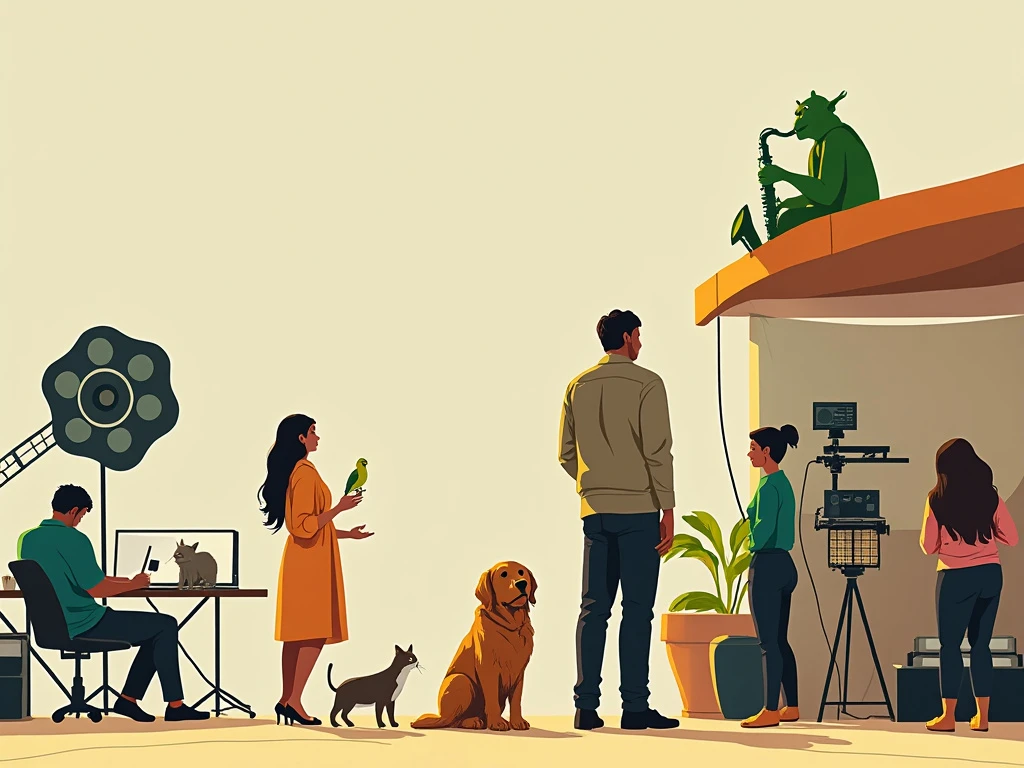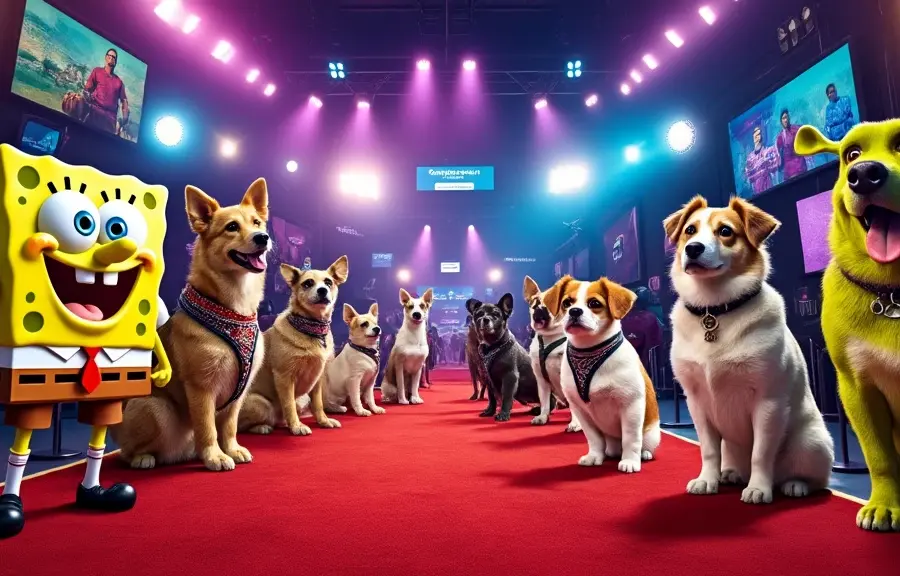# How Pets Are Transforming the Entertainment Industry Workplace
The entertainment industry is experiencing a significant evolution in workplace culture as four-legged companions increasingly become essential members of production teams. This transformation goes beyond a simple trend, representing a fundamental reassessment of optimal creative environments. Discover how animal companions are revolutionizing filmmaking processes and fostering more productive, harmonious sets throughout Hollywood and the global entertainment industry.
## The Rise of Pet-Friendly Film Sets
Over the past decade, major studios including Warner Bros. and independent powerhouses like A24 have increasingly embraced comprehensive pet-friendly policies. This marks a dramatic shift from traditional film environments where strict “no pets” rules were enforced due to concerns about disruptions and equipment safety. Productions such as “John Wick” have famously welcomed cast pets during filming, creating a relaxed atmosphere that crew members directly attribute to enhanced workplace satisfaction and productivity.
What started as occasional exceptions for celebrity pets has evolved into structured policies at industry leaders like Bad Robot and Amblin Entertainment, featuring designated pet areas and clear guidelines for animal inclusion in daily operations. Industry insiders report these policies have become significant recruitment advantages in a competitive talent landscape, with many cinematographers, editors, and production designers specifically seeking pet-friendly productions when evaluating career opportunities.
## Stress Reduction and Mental Health Benefits
According to research published in the Journal of Occupational Health Psychology, workplace interactions with animals can reduce cortisol levels by up to 25%—particularly significant in an industry known for high-pressure environments. During challenging production periods on films like “Dune” and “Nomadland,” crew members reported that animal companions provided essential emotional support during extended stress periods, maintaining team morale during grueling 14+ hour filming days.
Award-winning filmmaker Greta Gerwig noted that having her rescue dog present during “Little Women” production helped maintain perspective during technically challenging sequences. Similarly, legendary cinematographer Roger Deakins credits his terrier with providing “necessary mental breaks” during intense filming periods. These professional testimonials reflect growing recognition that pets function as natural stress buffers in an industry where burnout rates exceed 60% among production professionals.
## Building Stronger Production Teams Through Animal Companionship
Pets serve as remarkable social catalysts in hierarchical environments like film sets, where traditional power dynamics often inhibit open communication. When Tom Hanks brought his labrador to the “Finch” set, crew members reported that interactions with the dog created natural opportunities for cross-departmental conversations that might otherwise never have occurred. This “pet bridge effect” helps dissolve artificial barriers between directors, actors, and technical staff.
During Christopher Nolan’s “Tenet” production, a production assistant’s therapy dog became an unofficial mascot that facilitated relationship-building throughout the complex international shoot. The shared experience of interacting with the animal created common ground among team members from different countries and specialties. This animal-centered bonding translates directly to improved collaboration, with research indicating teams with shared positive experiences demonstrate 35% better problem-solving capabilities.
## Pets as Creative Inspiration in Filmmaking
Animal presence on set doesn’t merely improve mood—it actively stimulates creative thinking. Neuroscientists have documented increased alpha wave activity (associated with creative states) when subjects interact with animals in work environments. Director Taika Waititi attributes his dog’s spontaneous behavior on the “Jojo Rabbit” set with inspiring a pivotal emotional scene absent from the original script, demonstrating how animal energy sparks unexpected creative directions.
Observing natural animal behavior provides filmmakers with fresh perspectives on storytelling rhythms and authentic reactions. Renowned cinematographer Rachel Morrison noted that her cat’s natural curiosity directly influenced camera movement choices across multiple projects. These organic inspirations represent unique creative resources that traditional production environments typically lack, introducing elements of spontaneity and authenticity that elevate the final product.
## Success Stories: Productions Transformed by Pet Presence
The evidence supporting pet-friendly production extends beyond anecdotes to measurable outcomes. A comparative analysis of six similar-sized productions in 2021 revealed those with pet-friendly policies experienced 18% fewer sick days and 23% higher crew retention rates than their traditional counterparts. HBO’s acclaimed limited series “Mare of Easttown” implemented a comprehensive pet program that producers credit with maintaining team cohesion during challenging COVID-19 restrictions, resulting in fewer production delays despite difficult circumstances.
Legendary producer Kathleen Kennedy reports that since Lucasfilm began allowing pets at their production offices, employee satisfaction scores have increased by 27%. These quantifiable improvements demonstrate that pet-friendly policies represent not merely a workplace perk but a strategic advantage in an industry where production quality depends heavily on team stability and creative satisfaction.


